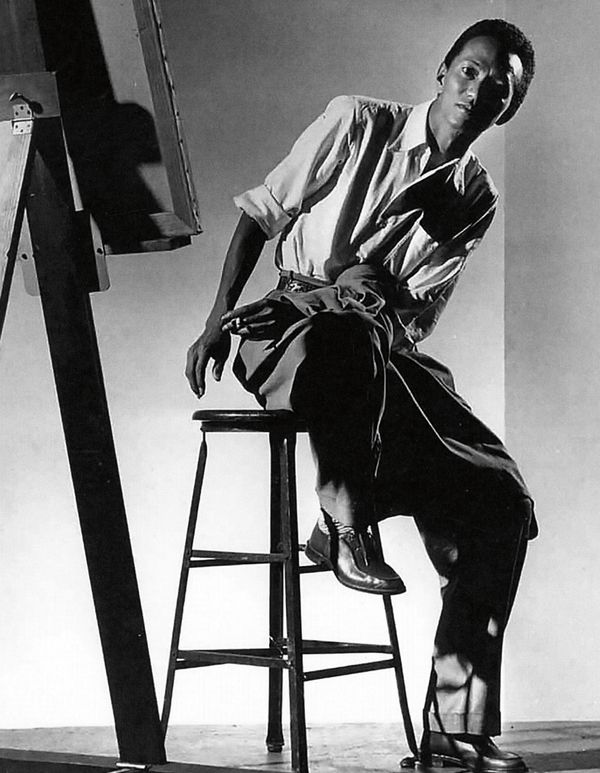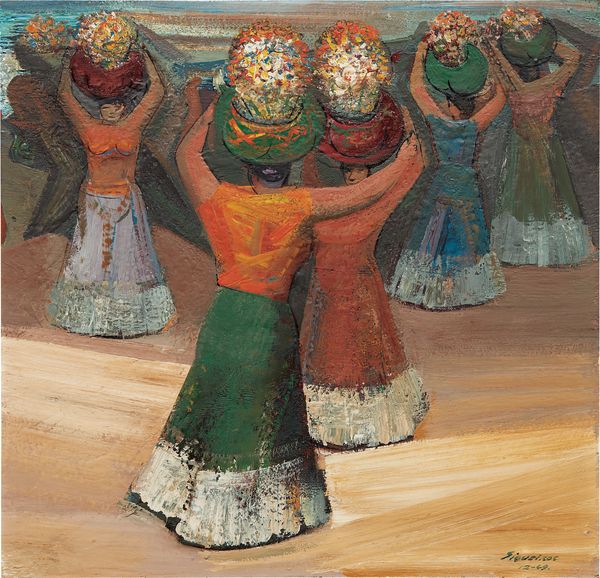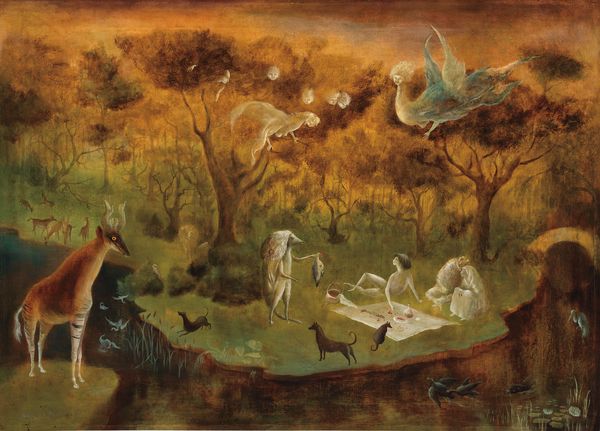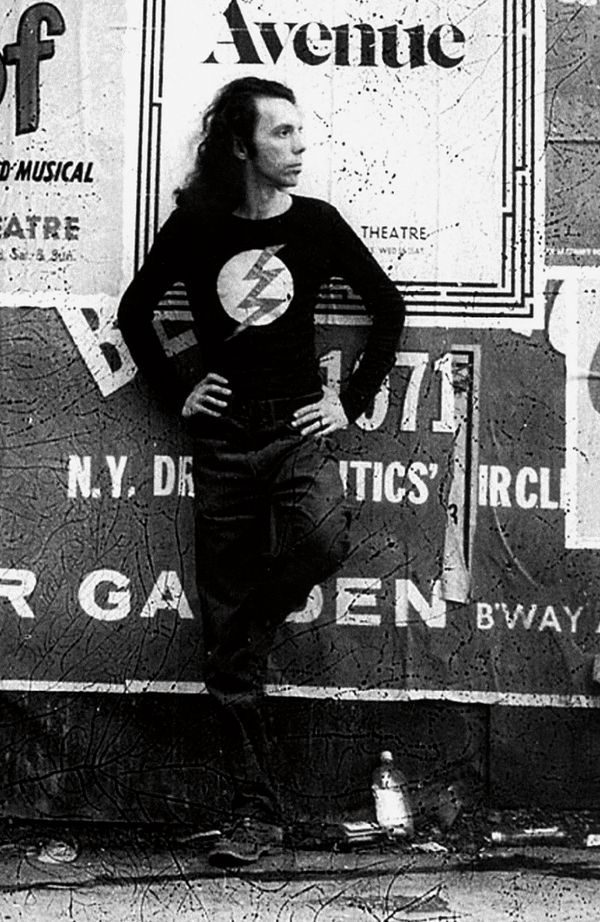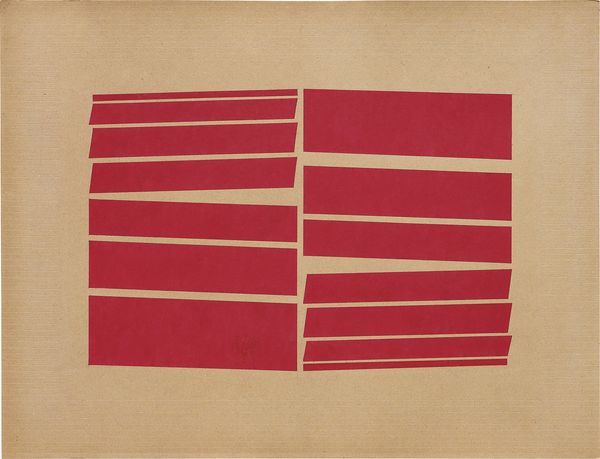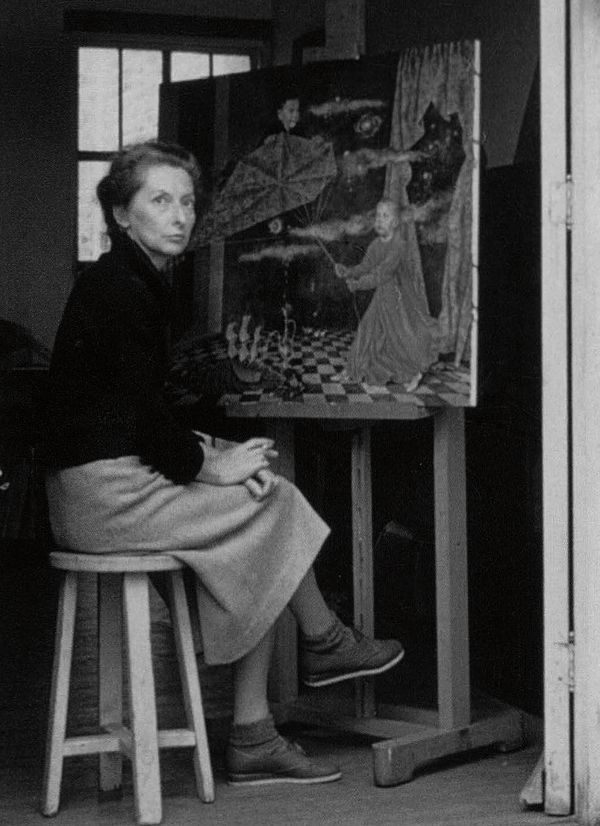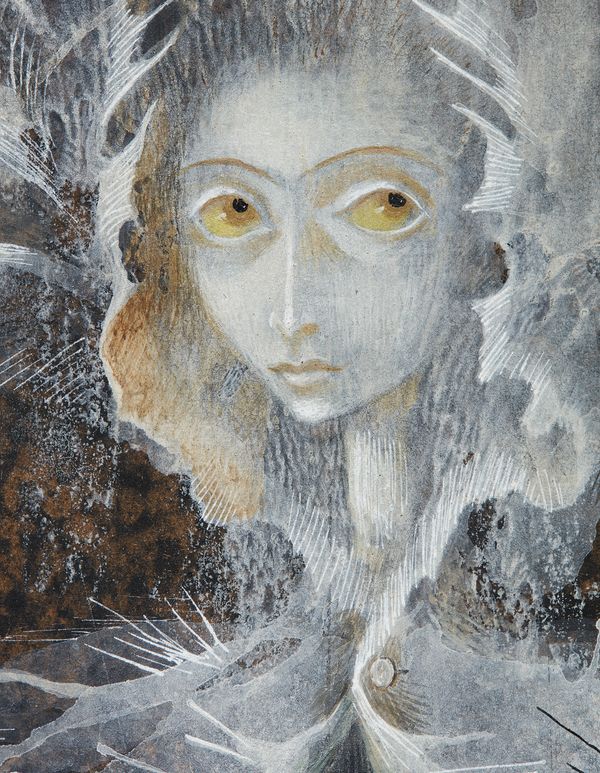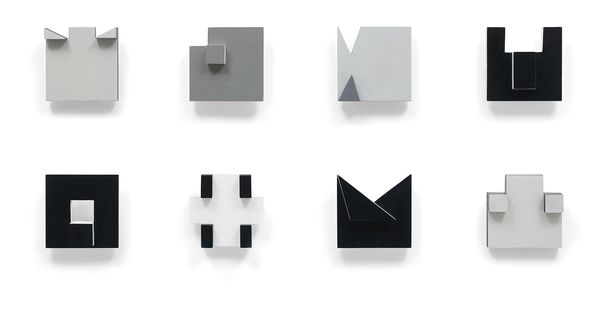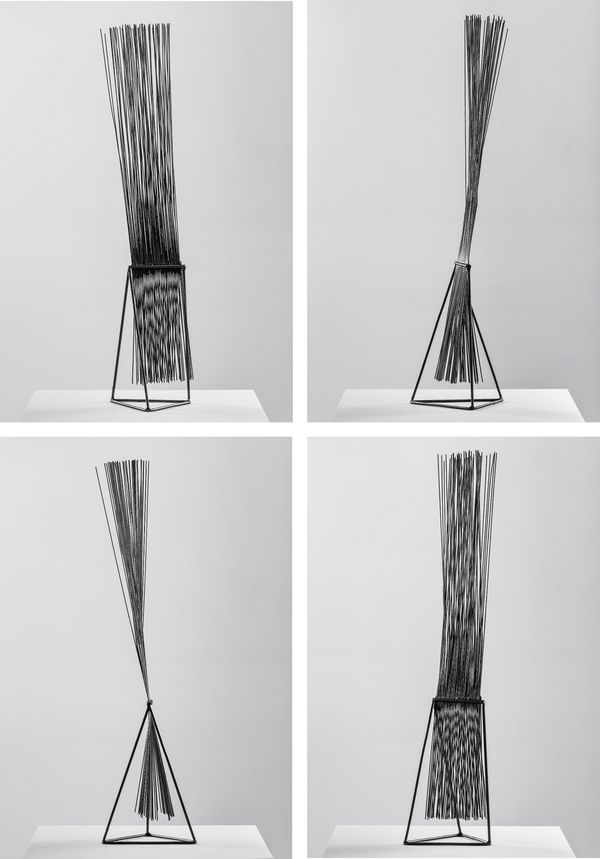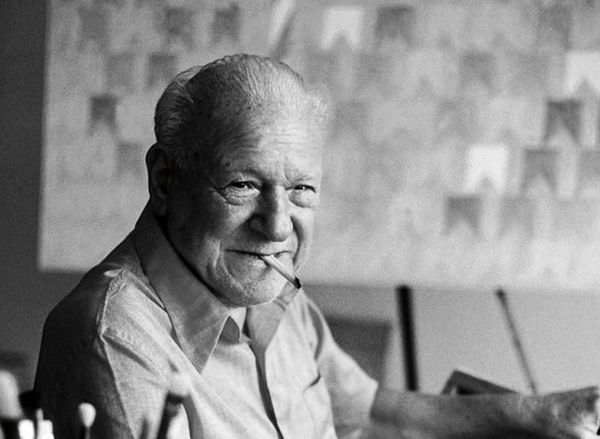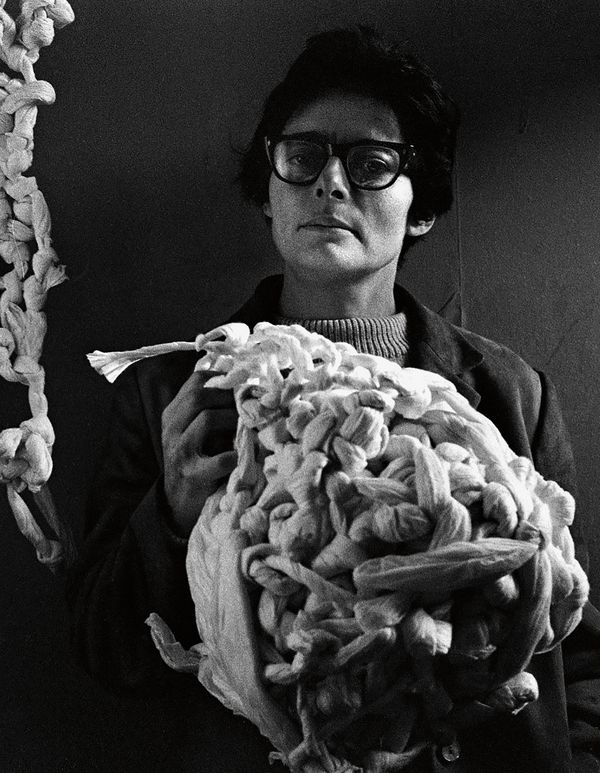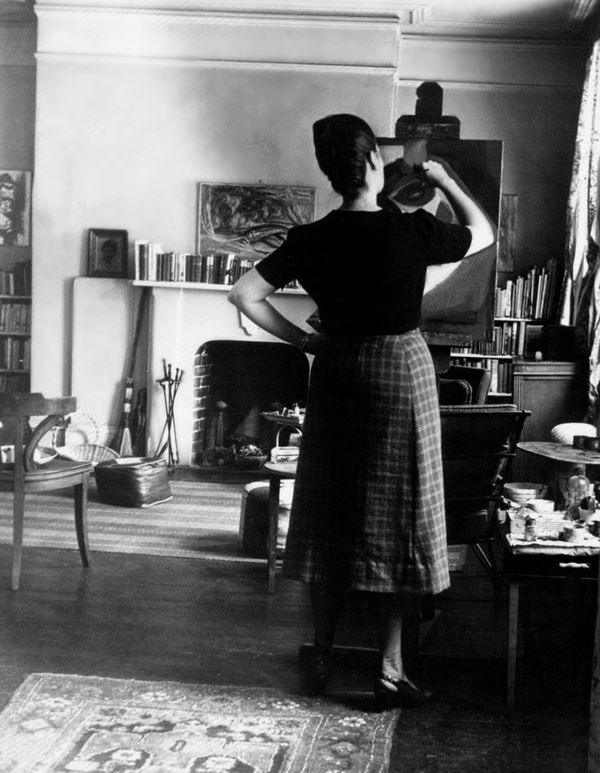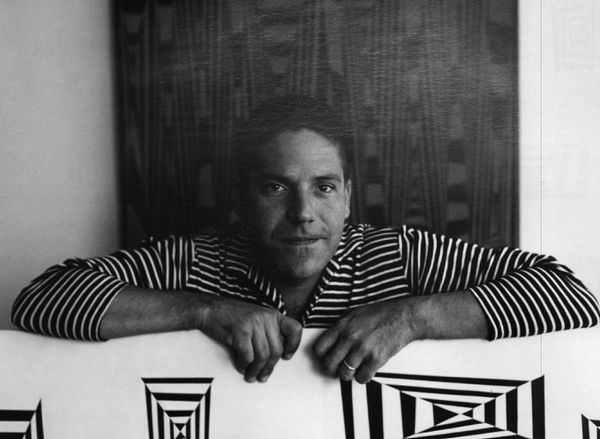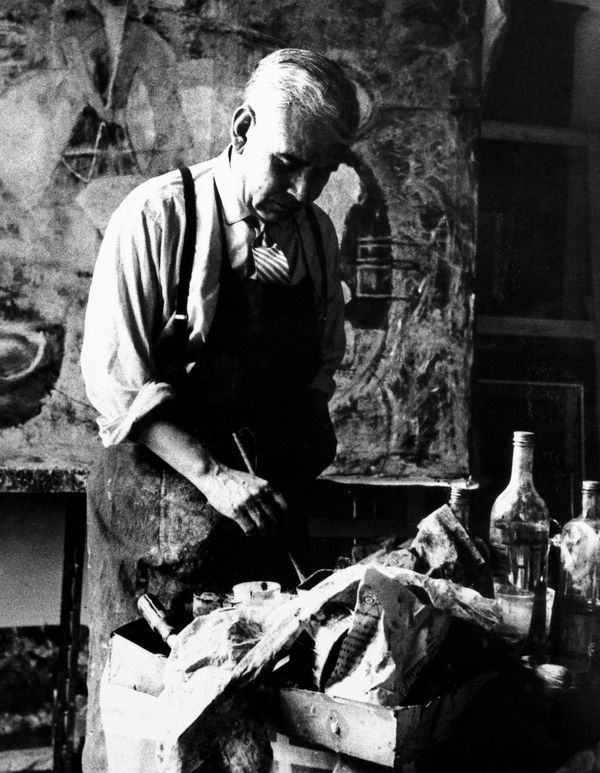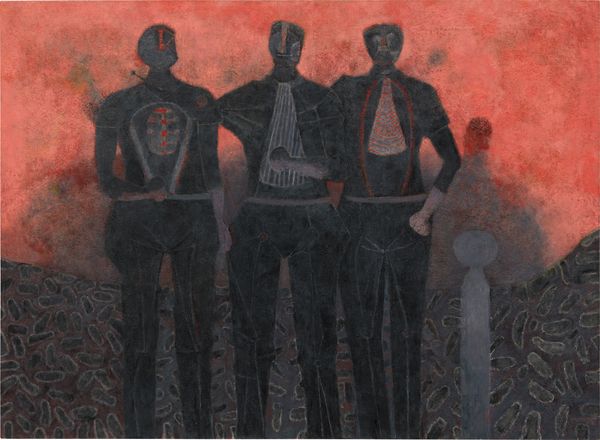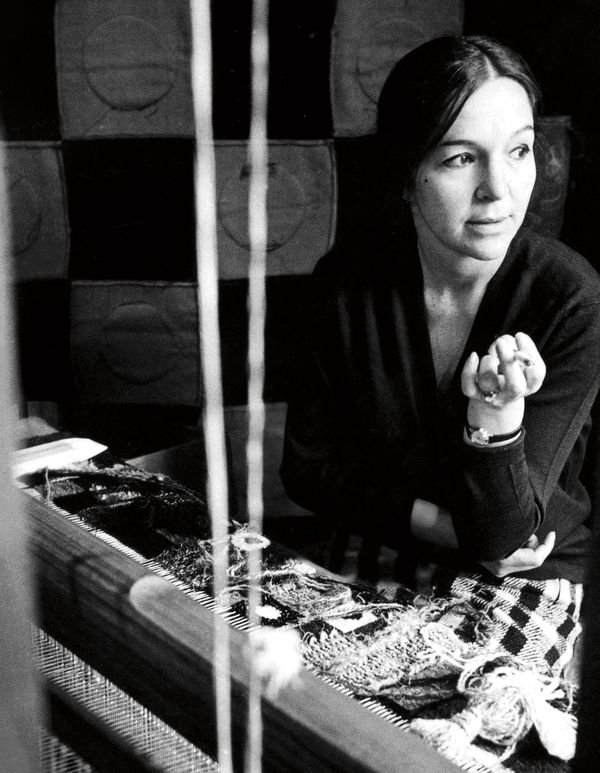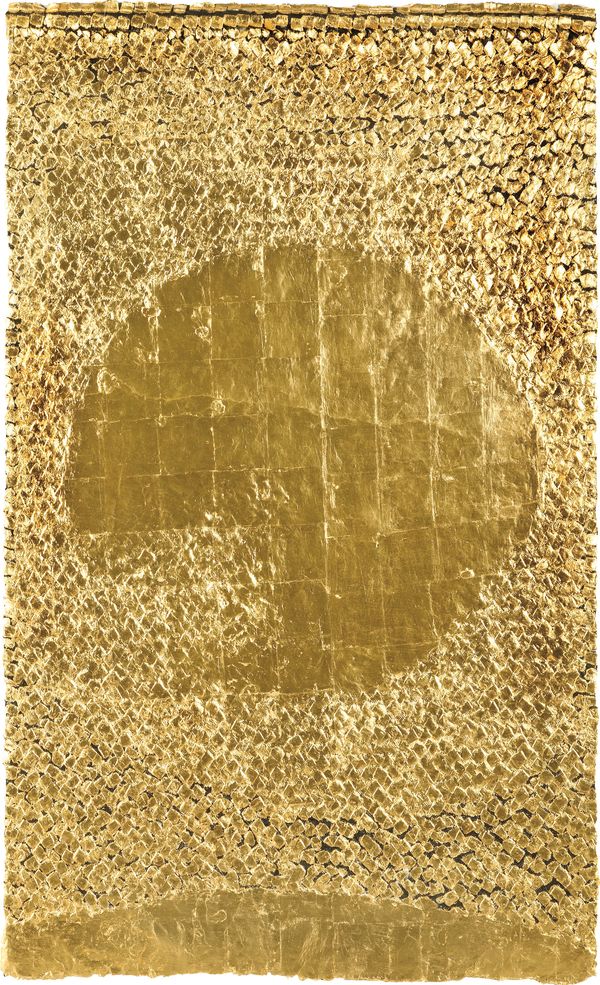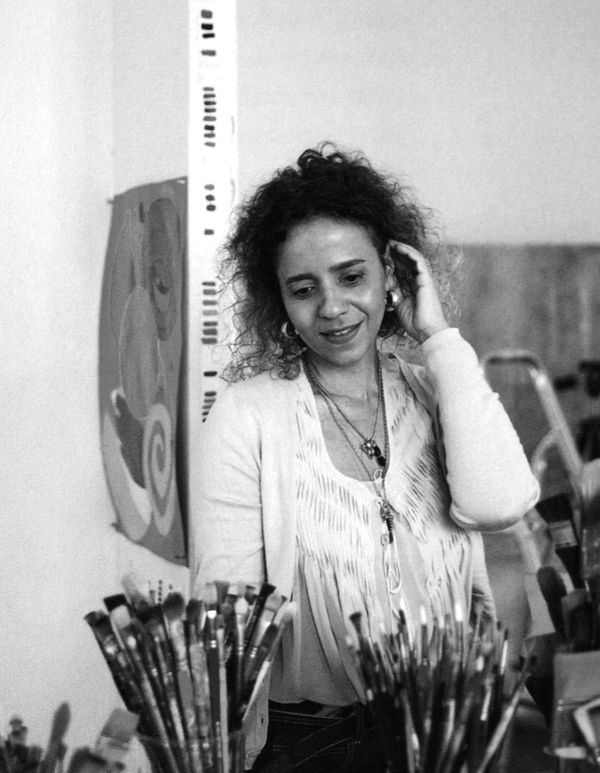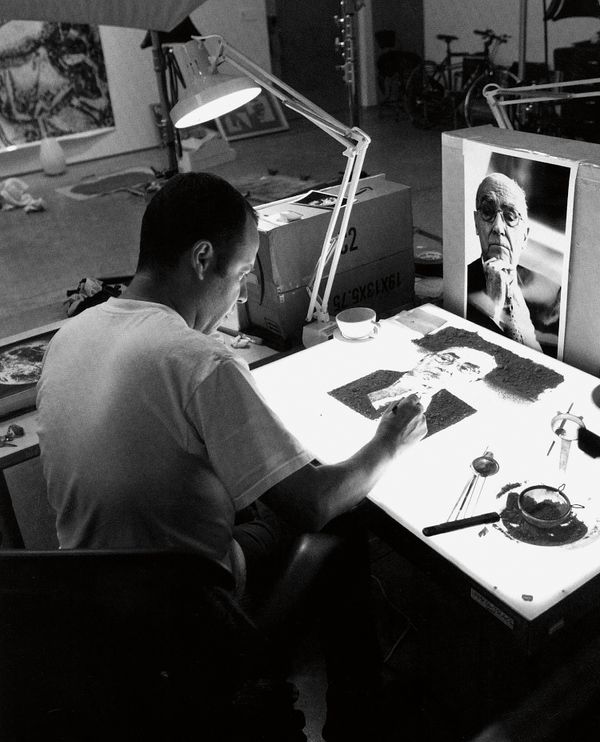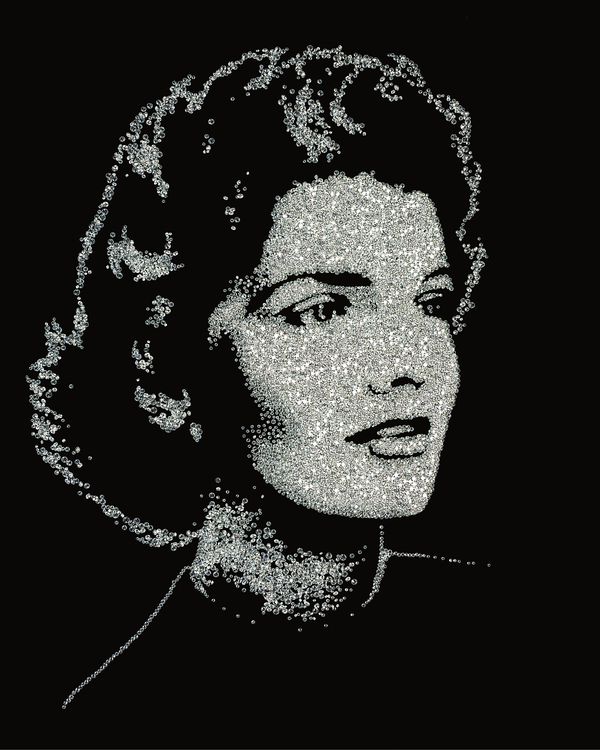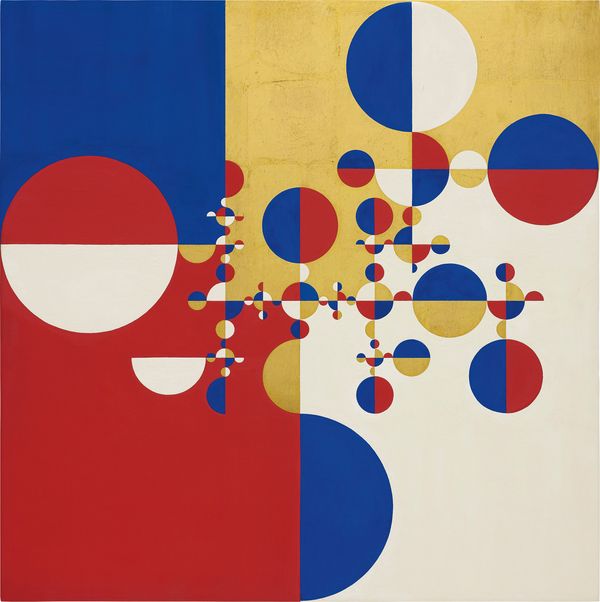Lygia Pape Livro noite e dia (Book of Night and Day), executed 1963-1976
Latin America has always been a confluence of cross-cultural dialogues. These exchanges reached new heights during World War II as the mass exodus from war-torn Europe populated the region of Latin America—from Buenos Aires to Mexico City—with artists, writers, musicians and philosophers, leading to a flood of new ideas, styles and influences. During the twentieth century not only did these European immigrants quickly become woven within the artistic circles of the many cosmopolitan metropolises throughout Latin America, but a number of the talented young artists native to these countries traveled to Europe and the United States, where they exhibited, taught and worked among their transnational peers.
To gauge Latin America from a cultural perspective one has only to look at a small selection of modern masters to get a sense of the breadth of creativity from Lucio Fontana—born in Argentina yet long recognized as one of Italy's most important modern artists—to Wifredo Lam—who reappropriated Picasso's primitivism, bringing it from Paris to Havana—to Leonora Carrington—born a socialite in Great Britain, who ran away to Paris with Max Ernst before immigrating to Mexico to lead the Surrealist movement there.
This desire to resist, subvert, break down and cannibalize has been at the heart of Latin American Art over the past century. This is why we feel it is essential to integrate the discussion of Latin American Art within the global context of Modern and Contemporary Art. It is integral to understanding the genesis behind the multitude of artistic movements—both within the region and beyond—and the unique styles of these individual artists, who have formed the underpinning of what we consider Latin American Art today.
It is the celebration of these artists and their broader impact worldwide that we are so keen to share with you as we strive to break down the wall that has, for so long, been erected between Latin American and Contemporary Art. These artists themselves have pioneered so many revolutionary movements, including breaking the barrier between two-dimensional and three-dimensional art, as seen in the work of artists like Gego and Hélio Oiticica.
We begin this journey chronologically, with a small selection of key works from our upcoming Latin America Sale on 24 May 2017.
My painting is an act of decolonization not in a physical sense, but in a mental one.
—Wifredo Lam
Portrait of the artist, 1963. Wifredo Lam, Ö Albissola Archives. Photographer: Gjon Mili / John Miller. Photo Courtesy of Centre Pompidou/copyright Adagp, Paris 2015
Wifredo Lam Untitled, circa 1943
Wifredo Lam's contributions to modern painting were no doubt pivotal. He expanded both the parameters of Surrealism and Cubism by imbuing his work with a unique Afro-Cuban vocabulary infused with Santería. Early in his career while studying in Spain, Lam met Pablo Picasso, who would become his mentor and one of his great supporters. The subtle luminosity of the painting illustrated here embodies one of Lam's iconic leitmotifs: the metamorphosed figure of the femme-cheval, a hybrid creature—both woman and horse—possessed by a spiritual divinity. The elegant posture and stylized manner point to Lam's inventiveness, building upon what he learned in the avant-garde circles in Paris before returning to Cuba where he would change the artistic landscape forever.
When Lam painted Untitled (circa 1943), he was at the height of his career, producing some of his most important works, including his masterpiece, The Jungle (1943), purchased by the Museum of Modern Art, New York soon after its creation. During this time, Lam was also involved with André Breton's Surrealist scene in New York, leading to his participation in the important group exhibition First Papers of Surrealism, organized in 1942 by Breton and Marcel Duchamp. This exhibition resulted in Lam's first solo show at the renowned Pierre Matisse Gallery.
Internationally lauded during his lifetime, Lam's pivotal importance has recently been re-acknowledged with blockbuster retrospectives at the Centre Pompidou in Paris, Centro de Arte Reina Sofa in Madrid and the Tate Modern in London from 2015 to 2016.
Art is a weapon that penetrates the eyes, the ears, the deepest and subtlest human feelings.
—David Alfaro Siqueiros
David Alfaro Siqueiros, Mexico City, circa 1971. Acervo INBA y CONACULTA - Proyecto Siqueiros: Sala de Arte Público Siqueiros. © 2017 Proyecto Siqueiros
David Alfaro Siqueiros Tehuanas, 1949
David Alfaro Siqueiros was a leading member of the Mexican mural movement, known for his expressionistic style and fiery palette. For Siqueiros, muralism was the next step in social realism, giving him a public platform for his communist political agenda and socialist ideals. Tehuanas (1949) is a prime example of the artist's mature work, raising the consciousness of the masses by showcasing a joyous pride in Mexicanidad through his depiction of Tehuantepec women in their traditional garb, a style that was also adopted by Frida Kahlo as a means of embracing Mexican popular culture in an increasingly globalized world.
This painting also exhibits Siqueiros' unique and revolutionary painting practice developed in 1936 in New York, where he founded Siqueiros Experimental Workshop. There, he led a series of classes, testing a variety of industrial paints and introducing new methods and mediums into his work. Indeed, it is arguable that Jackson Pollock, who was studying under Siqueiros at this time, first learned his famous drip technique in the SEW, and the parallels between the two artists work during this period are undeniable. During this same year, Siqueiros executed his famous work, Collective Suicide—now in the collection of the Museum of Modern Art in New York—which immediately caught the attention of the international art milieu and was included in the seminal Surrealist exhibition, Creation of Evocative Chaos, at MoMA in 1936, alongside works by artists like Paul Klee and Yves Tanguy.
I didn't have time to be anyone's muse…I was too busy rebelling against my family and learning to be an artist.
—Leonora Carrington
Kati Horna, Leonora Carrington at Her Easel (Mexico City), 1956. Gelatin silver print. 9 3/4 x 7 7/ 8 in.
Private Collection, Mexico City. © 2005 Ana María Norah Horna y Fernández. All rights reserved.
Leonora Carrington Pastoral, 1950
Born to a wealthy English family, Leonora Carrington pursued her career in art against her parent's wishes. She studied at the Chelsea School of Art and the Ozenfant Academy in London, co-founded by Le Corbusier. At the 1936 International Surrealist Exhibition in London, Carrington first saw the work of Max Ernst, and soon after the two became romantically involved, running away to Paris together despite an age difference of more than 25 years. Ernst's influence is evident in her painting techniques of frottage and automatism. During this time, Carrington became deeply entwined with André Breton's Surrealist circle, meeting artists like Dalí, Picasso and Tanguy.
However, the outbreak of World War II would ultimately tear her from this world and from Ernst, and in 1943 Carrington fled to Mexico, becoming part of the émigré Surrealist community living there. She quickly became close with Spanish artist Remedios Varo, and the two women broke with the orthodox, male dominated Surrealist canon.
Carrington's interest in cooking and alchemy became integral to her work, as well as her fascination with the animal world. Pastoral (1950) is an exquisite example of Carrington's mature work: a highly detailed landscape populated by extraordinary fairytale-like, hybrid creatures, referencing both Celtic mythology and Manet's famous Le déjeuner sur l’herbe (1863), showcasing her masterful painting technique as well as her creative spirit. Carrington was not only widely exhibited during her lifetime at renowned venues such as the Pierre Matisse Gallery in New York, but since her death in 2011 has been featured in important museum exhibitions at venues such as the Los Angeles County Museum on Art and the Irish Museum of Modern Art.
Still of Hélio Oiticica from Ivan Cordoso's film H.O., 1979. © Topázio Filmes / Ivan Cardoso, Photo: Eduardo Viveiros de Castro. Copyright © 2016 Carnegie Museum of Art
Hélio Oiticica Metaesquema, 1958
Born in Rio de Janeiro, Hélio Oiticica was one of the most inventive artists of the post-World War II period. A dreamer and an idealist, he created experiential environments where viewers became participants, enveloped in all means of artistic apparatuses. Oiticica identified strongly with his Brazilian roots and spent a great deal of time in the favelas of Rio, which he recognized as strongholds against the oppression of the military dictatorship in his country. His groundbreaking installation Tropicália (1967) was a sensorial portrait of Rio as well as an environment that engaged and absorbed viewers in a myriad of ways. Oiticica exhibited widely during his lifetime, with his acclaimed Whitechapel Experiment in London and later efforts to make a name for himself in New York. Tragically, the artist died very young and little is left of his artistic production, due to a terrible fire in 2009 that destroyed nearly 2000 of his works.
Much of what remains are Oiticica's early works, which he disregarded as unimportant, yet they are stunning jewels that give insight into the young mind of an artistic genius, informing much of his later experiments. The above work, Metaesquema (1957), shows Oiticica's grasp of European abstraction and the influence of artists like Piet Mondrian and Kazimir Malevich, who pushed for an art that would transform society. The series of Metaesquemas produced from 1957 to 1958 demonstrate the artist's preoccupation with color as an entity with its own time, structure and space. Yet, even as one of the youngest artists associated with the Grupo Frente, Oiticica quickly cannibalized the older members' achievements, becoming a leader of the Neo-Concrete movement that would transform Brazilian art forever.
I arrived in Mexico seeking the peace I had not found in Europe because of the turmoil there—for me it was impossible to paint amidst so much uneasiness.
—Remedios Varo
Remedios Varo painting the Villaseñor portrait in her studio on Avenida Álvaro Obregón, 1957. Photograph by Duncan McNeill
Remedios Varo La Mujer libélula (Dragonfly Woman) (detail), circa 1961
To understand Remedios Varo's contribution to the Western art canon, one must know her trajectory. During the 1930s, the Spanish-born Varo lived in Paris and was a member of André Breton's Surrealist circle. Her works were shown in significant exhibitions, such as Fantastic Art, Dada, Surrealism at the Museum of Modern Art in New York in 1936. After the German Invasion, Varo immigrated to Mexico in 1941, where she joined Matta and Gordon Onslow Ford in an exploration of the fourth dimension. Breton had recently visited Mexico in 1938 as well, to give lectures on Surrealism and meet with Leon Trotsky, who was exiled there. For Breton, Mexico was "the surrealist place par excellence" and his visit catalyzed a series of international Surrealist exhibitions that would help to launch Varo's career.
For Varo, Mexico was an ideal setting, as it gave her the physical and metaphorical distance from French Surrealism that allowed her to concretize a new form of the European movement, exploring the female psyche and portraying women as protagonists rather than the typical male-centric vision of her counterparts in Europe. La Mujer libélua (Dragonfly Woman) (circa 1961) is a key example of this effort, depicting a graceful yet powerful female figure painted in luminous layers of delicate gouache and staring directly out at the viewer with a challenging yet quizzical gaze.
Lygia Pape Livro noite e dia (Book of Night and Day), executed 1963-1976
One of the founders of the Neo-Concrete group in Brazil, Lygia Pape pioneered the movement beyond the rigorous tenants of Concrete abstraction, incorporating the inextricable participation of the viewer with the art object. Pape pushed the boundaries of minimalism through her unique series of "books" that explore history, time and humanity—as much visual poetry as they are works of art.
The above work—eight elements from the Book of Night and Day—is from a series where the artist created three sets of unique objects—each consisting of 365 elements—over a period lasting from 1963 to 1976. Each of these objects represents a day in the span of a year, and the work closely relates to her most famous work, the Book of Time. Unlike the Book of Time, which consists of brightly hued primary colors, the Book of Night and Day has a subtler visual effect, utilizing only variations of white and black. It allowed her to study light and have more freedom in the creation of each element, relating closely to Pape's cinematic work, in which she was preoccupied with the cutting and fragmenting of time, as well as the endless possibilities of each moment.
Often seen in the shadow of her contemporaries Hélio Oiticica and Lygia Clark, Pape is now receiving international accolades with a marvelous retrospective at the Met Breuer in New York, her first exhibition of this kind in the United States.
Gego in the Museo de Bellas Artes, Caracas. Photograph by Joseph Fabri. © Fundación Gego
Gego Untitled, executed in 1967
Untitled (1967) marks a seminal moment in the career of German-born architect and engineer Gertrude Goldschmidt, more commonly known as Gego. Forced to fee Nazi Germany in 1939, Gego quickly established herself in her adopted Venezuela as a major creative force through various architectural projects, leading to prestigious teaching positions at important educational institutions in Caracas.
Her abstract drawings earned the encouragement of the modern masters Alejandro Otero and Jesús Rafael Soto. Furthering the aesthetic and conceptual principles of Constructivism, Geometric Abstraction and Kinetic Art, Gego's unique spatial investigations are abstract constructions that escape the limitations of the picture plane. Her paperless, three dimensional drawings—first made in iron—achieved a new level of virtuosity when, in 1967, she began to employ stainless steel wire. The light and fexible medium eliminated the need for an intermediary, such as a welder and blacksmith, thus freeing Gego to make emblematic works by her own hand, among the first of which is the piece illustrated above.
Volpi in his workshop, with the colors he prepared himself. Photograph by Carlos Namba. Courtesy of the Instituto Alfredo Volpi de Arte Moderna
Alfredo Volpi Banderinhas com mastro, painted circa 1970
Alfredo Volpi's significance within the international art milieu is intimately tied to his personal life. The son of Italian immigrants, Volpi grew up in a lower-middle-class neighborhood in Brazil, where he worked as a decorator, painting in Renaissance and Moorish styles. Despite being self-taught, he participated in dialogues with other artists and intellectuals in every phase of his oeuvre, acutely observing his neighborhood's various landscapes, homes and terraces. In 1950, Volpi made a noteworthy trip to Italy and France. There—much like the self-taught conceptual artist Robert Ryman—Volpi studied medieval art extensively for six months. This prompted a radical shift in his style, resulting in his most important series of works, Banderihnas (Small Flags), exemplified in the work seen above.
In Banderihnas com maestro (circa 1970), Volpi used egg-based tempera instead of oil paint to achieve the luminous color palette, imbued with geometric rigor and precision. This simplified yet striking series brought him international recognition, enabling the artist to exhibit in the first three São Paulo Biennales and later at the Venice Biennale. Most notably, this series won him the National Prize of Painting in the seminal 1953 São Paulo Biennale, considered one of the most important modern art exhibitions of the 20th century. Only now beginning to be once more acclaimed by the international art world, Volpi received much recognition during his lifetime, including receiving the Guggenheim International Award in 1958, among other accolades.
[Mira Schendel] was a misplaced person. Territory, for her, was always an issue, and you can see it in her work.
— Ada Schendel, Laura Barnett/The Guardian
Photo © Clay Perry courtesy England & Co Gallery, London
Mira Schendel Untitled, executed circa 1970
Born in Zurich and later studying in Milan, Mira Schendel emigrated to São Paulo in 1949, where she began her artistic career in earnest. She found Brazil ripe for artistic innovation, both thanks to the community of European émigrés living there during this time as well as the exploration of abstraction being led by artists like Lygia Clark and Hélio Oiticica.
Schendel received international recognition after exhibiting her Objectos Grafcos in the 1969 Venice Biennale. These iconic objects—both graphic and ethereal—represent an art of minimalist and semiotic significance, heavily influenced by the language barriers she faced after prosecution in Europe. The above work is a variation on this series that is unique in this boldly hued coloration, contrasting the delicate medium of rice paper. Schendel has been widely recognized both in Brazil and internationally, as evidenced by her retrospective at the Tate Modern in London in 2013.
The initial point of departure in my work is a process of organization that follows the dictates of reason… It is a process that must choose, among innumerable possibilities, the one that balances reason and visual execution.
—Carmen Herrera
Herrera painting in her apartment, 50 King Street, New York, late 1940s © Carmen Herrera
Carmen Herrera Untitled, painted in 1971
Born in Cuba in 1915, yet residing most of her mature life in New York, Carmen Herrera is best known for her paintings that set two brightly hued, contrasting colors in stark opposition through a carefully balanced arrangement of sharp, geometric planes. However, black and white paintings were critical to her artistic process and make up an important body of work, which the artist created in short bursts over a period lasting from 1951 to 1989. The twenty-two black and white paintings were shown together in the artist's first major museum exhibition in the United States at El Museo de Barrio in 1998. As articulated by curator Carolina Ponce de León, "Working in black-and-white allows the artist to detach herself from the demands and seduction of color, and so to concentrate on the constructive elements of the image. Each sequence would be finished when she 'felt the need for color arising anew.'"
Herrera began her sojourn into Concrete art when studying in Paris in the early 1930s at Marymount College. Her mature work follows in the tradition of masters such as Piet Mondrian, Theo van Doesburg and Kazimir Malevich, and was developed simultaneously alongside her more internationally recognized contemporaries—artists like Ellsworth Kelly, Barnett Newman and Frank Stella. The black and white works also undoubtedly refer to her training as an architect, aptly addressed by Ponce de León, who states, "The harmony, the study of proportion, the conception of space and the abstract thought intrinsic to the discipline [of architecture] were concerns that evolved rapidly in her painting."
Untitled (1971) has a soaring, skyscraper-like presence yet is entirely concrete in its design, creating a harmonic symphony of stillness that captivates the viewer, demanding attention despite its simplicity and reminding us of Herrera's extraordinary and groundbreaking achievements in abstract art.
Carlos Cruz-Diez in his workshop in Caracas, 1958. © Carlos Cruz-Diez / Adagp, Paris, 2013
Carlos Cruz-Diez Physichromie No. 939, executed in 1977
During the 1950s, Carlos Cruz-Diez left Venezuela to travel extensively throughout Europe, where he explored the possibilities of Constructivism while continuing to develop his interest in chromatic structures and color theory. Physichromie No. 939 (1977) is part of his most important series, which he began in 1959 and has continued to investigate for decades. The exact medium of these works has developed over time but has always consisted of alternating colored strips that trap light, producing a chromatic effect that constantly changes as the viewer moves around the piece. In this way, the viewer becomes a participant in the artwork, not merely a spectator.
The innovative aspects of the these works immediately caught the attention of the international milieu, and very early in his career Cruz-Diez was included in two seminal exhibitions in Europe and the United States: Movement 2 at the famous Galerie Denise René in Paris in 1964 and The Responsive Eye at the Museum of Modern Art in New York in 1965. Cruz-Diez was also the subject of a major retrospective at the Museum of Fine Arts Houston in 2011, titled Carlos Cruz-Diez: Color in Space and Time.
Do not set out to make Mexican art, or American, Chinese, or Russian art. Think in terms of universality.
—Rufno Tamayo
Photo by Estudio Maywald © Fundación Olga y Rufino Tamayo
Rufino Tamayo Tres amigos, painted in 1987
By the age of 27, Rufino Tamayo had already travelled extensively, first to New York and then later to Europe. These travels forced him to reevaluate his understanding of Mexican art within the broader context of European Modernism. As a result, Tamayo began experimenting with various movements, including Fauvism, Cubism and eventually Abstract Expressionism, melding these avant-garde styles with depictions of Mexican folklore and indigenous culture.
It was in New York during the 1940s that he consolidated his place on the international art scene with a number of important exhibitions at recognized venues, such as the Pierre Matisse Gallery. By the 1970s, Tamayo had returned permanently to Mexico, after settling briefly in Paris where he completed an important mural for the UNESCO building in 1958.
His later works reveal a preoccupation with liberating the traditional compositional structure of painting. Tamayo began to include ovals, trapezoids and triangles in his canvases in a graphic style that was also highly tactile. In Tres amigos (1987), Tamayo thickened the oil paint using sand, giving the painting a viscous texture and a raw, unfinished quality, clearly alluding to Jean Dubuffet. By depicting the figures in simplified shapes covered with geometric patterns, Tamayo incorporates the style of intricate Pre-Columbian pottery. This seemingly links his work to Picasso's primitivism, yet rather than objectifying the "other," Tamayo utilizes this visual iconography to explore his own identity as a mestizo—a blend of indigenous and European blood.
As both a symbol of Mexican pride and an internationally renowned artist, Tamayo has been featured in countless museum exhibitions around the world, including a major retrospective at Solomon R. Guggenheim Museum in New York in 1979, titled Rufino Tamayo: Myth and Magic.
I don't think about the passage of time. I really feel that every one of my pieces has its own time.
—Olga de Amaral
The artist in her studio, 1965. Photo by Diane Witlin, courtesy of the artist, p. 88, Olga de Amaral: The Mantle of Memory, 2013, Somogy Art Publishers, Galerie Agnes Monplaisir, Amaral Editores.
Olga de Amaral Sol cuadrado No. 16, executed in 1994
Born in Colombia in 1932, Olga de Amaral began her formal training as an architect but—dissatisfied with her schooling—she enrolled in the Cranbrook Academy of Fine Art in Michigan to study textiles. After this period in the United States, she returned to her native country to study ancient Pre-Columbian textile techniques and gold artifacts. In 1965, she founded the textile department of Los Andes University. Coincidentally, the renowned contemporary textile designer, Jack Lenor Larsen—who visited Colombia and de Amaral's workshop—expressed his interest in her work and would go on to help her launch her career internationally. This would lead to an important early exhibition that included her work, entitled Wall Hangings, at the Museum of Modern Art, New York in 1969.
Thereafter, de Amaral was invited to exhibit extensively, including in the Venice Biennale in 1986. The large-scale sculptural quality of her distinctive woven pieces caught the attention of the art world, transcending the boundaries of conventional craft and contemporary art. These shimmering metallic objects not only introduce the fine art principles of abstraction and geometric rigor into traditional weaving techniques but also emit a spiritual quality that induces tranquility and reverence in the viewer.
The glowing work seen here is a prime example of de Amaral's unique and compelling sculptural textiles that is both solid and immaterial in its subtle surface qualities, feeling at once ancient and yet completely of the moment, and drawing references to artists like El Anatsui and Eva Hesse.
I see the blank canvas as an invitation to develop my thoughts, my own world. It is very attractive in the sense that it is an empty space that is yours.
—Beatriz Milhazes
Beatriz Milhazes in her studio. © Berlin: Galerie Max Hetzler; Berlin: Holzwarth Publications; London: Ridinghouse, 2014
Beatriz Milhazes O Cisne, 2001
The work of Beatriz Milhazes induces viewers to experience an intense sensory immersion in texture and color, while simultaneously demonstrating a complex investigative approach towards European and Latin American art historical references. When organizing her exhibitions, Milhazes displays her earlier works along newer pieces to show an evolution and drive for innovation within her own aesthetic. Early on in her career, in 1989, the artist developed a novel technique, of painting various visual elements onto clear plastic sheets, then layering them directly onto the canvas—a method reminiscent of transfer prints, monotypes and collages. This layering also reflects her many influences, beginning with Baroque art from the 17th and 18th century, evinced by the highly detailed, decorative designs that populate her compositions.
In this particular painting, O Cisne (2001), there are also ties to Kinetic and Op art of the 1960s—referencing artists such as Bridget Riley and Alejandro Otero—as seen in her overlapping circular forms striated by vertical bands that create multiple focal points, optical depth and pictorial fatness.
But the most important aspect of this particular work is the artist's use of luminous gold as the dominating color palette. Gold has complex associations with the colonial conquests in Latin American countries like Brazil, as well as the value of art and its spiritual connotations. It is notable that for O Cisne, Milhazes has chosen a smaller format than we typically see in her work, drawing the viewer in towards the glowing canvas and revealing the ability of this particular painting to mesmerize and captivate the viewer.
Vik Muniz making José Saramago. Art © Vik Muniz/Licensed by VAGA, New York, NY
Vik Muniz Jackie (from the series Pictures of Diamonds), executed in 2005. This work is number 7 from an edition of 10.
Vik Muniz was born into a working-class family in Brazil in 1961. After studying advertising at the Fundação Armando Álvares Penteado in São Paulo, he moved to New York in 1983, where he has lived ever since. Muniz began as a sculptor, but his interest in the exploration of images, memory and perception made him turn to drawing and photography.
Muniz is best known for appropriating iconic images from art history and popular culture, which he then recreates with unusual materials before photographing them. The materials he uses to create these images range from sugar cane and diamonds to chocolate and even garbage. The textures he produces and the optical richness of the images he presents distinguish him from other photographers. The impact of his work on the contemporary art scene enabled him to present his first solo show in 1998 at the prestigious International Center of Photography (ICP) in New York and he was invited to represent Brazil at the 49th Venice Biennale in 2001.
To create the above work seen here, Muniz organized thousands of diamonds into a mesmerizing portrait of Jacqueline Kennedy, thereby eliciting her glamour through the use of precious gems, associated with wealth and status. It is also a testament to the infinite, regenerative potential of the creative image. His work has been exhibited extensively at prestigious museums such as the Tate Modern in London, the Modern Museum of Art, New York and the Solomon R. Guggenheim Museum.
I believe the major infuence on me is the spirit of all contemporary painting; this is to say, that in my work all the problems of contemporary painting are present.
—Gabriel Orozco
Gabriel Orozco. Cortesía de Conaculta, México
Gabriel Orozco Samurai Tree 6C, 2006
"A spirit of constant invention makes [Gabriel Orozco's] production one of the most intriguing and original of his generation," wrote Glenn Lowry in the catalogue for the artist's 2009 retrospective at the Museum of Modern Art, New York. Orozco was born to a highly educated and artistic family in Mexico, his father being a third-generation muralist in the tradition of David Alfaro Siqueiros, José Clemente Orozco and Diego Rivera. Yet, Orozco's extraordinarily philosophical and conceptual art was not immediately appreciated by the Mexican art scene during his youth. Instead, he frst became recognized in New York in the early 1990‘s, and then at the 1992 exhibition, America: Bride of the Sun, at the Royal Museum of Fine Arts, Antwerp—where Orozco exhibited along with Lucio Fontana and Cildo Meireles—that he truly launched his career.
From there, Orozco would go on to travel and exhibit around the world, renouncing the sanctified space of the traditional artist's studio, and instead utilizing the everyday streets as his canvas. The above work, Samurai Tree 6C (2006), comes from one of the artist’s best known series, one that disrupts the viewer's traditional notions of art by utilizing the medium of painting yet removing the artist’s hand completely, as well as his creative impulses.
Rather, the series of Samurai Tree Invariants—begun in 2004 and each executed by either Philippe Piccoli or Christian Macia—has over 600 computer generated permutations designed by Orozco and based on a composition drawn into four quadrants, following a systematic series of circles bisected by dividing lines with rotating colors of red, blue, white and gold.

